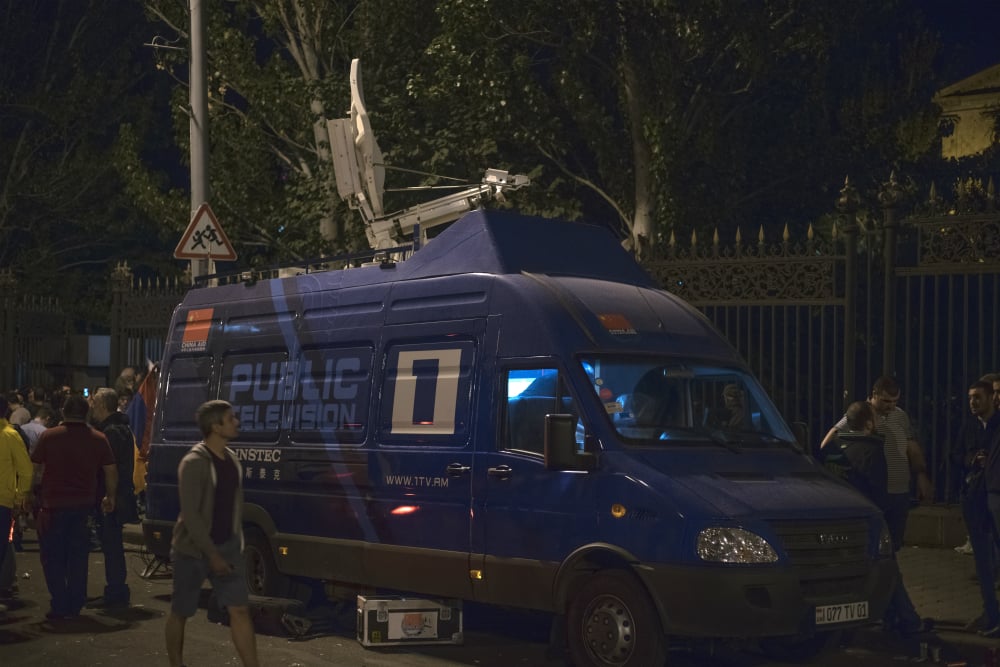
On October 2, an unexpectedly hot and evolving even took place in Yerevan. The National Assembly quickly accepted and voted in favor of amendments to the regulations, and Nikol Pashinyan called the people to an extraordinary rally just as quickly.
The mobilization of tens of thousands of people took place quickly, with beautiful and uncertain prospects, as it wasn’t clear, as to what kind of end the confrontation, between the parliamentarians and the wave of people who are behind the new political force, would be.
The people who came to Baghramyan Avenue and who later entered the National Assembly parek, were the demanders, the audience, and the witnesses. Not to mention Nikol Pashinyan’s most powerful and solitary resource.
This extraordinary gathering was an event that should have developed, but it was simply unclear as to how, what rhythm, and viewability that development would be.
And viewability is important, as some of the TV channels in the forefront have decided to cover mass gatherings for the first time after the Velvet Revolution.
TV Channels used the opportunity to show that they still exist, that television isn’t completely a corpse, which should be left in the pages of history just yet, but a means to reflect on the mass gatherings on a mass scale.
After the months of April and May, the channels have reached some conclusions, psychologically prepared themselves for change, and now they no longer ignored the unexpected assembly, but diligently tried to adjust the TV format. Shant, Armenia, Public TV Company and ArmNews gave a statement (or are continuing to make a statement) that they aren’t out of the game.
And for the first time, the audience (or at least a certain percentage) watched TV for information and not just for entertainment.
Of course, the coverage of an event which would last an indefinite amount of time or unknown exit requires not only a desire and spirit of readiness, but a skill that can be called laconism.
It’s clear that if you show a mass of patiently waiting people on live stream, there’s nothing really to be said about it, since neither a statement has been made nor any kind of extraordinary event. Especially, since that silent mass of patient people can stand there quietly for a long time. Which is, of course, not spectacular and cannot be enriched with interruptions.
Live stream websites online are able to not interfere with a quite image, documenting the live and unique atmosphere and event, but a the life of a TV broadcast which is accustomed of a different rhythm and to expensive broadcasting times, will not be perceived as a reality tv show.
And naturally, the shots of the participants waiting silently for news should be enriched with additional information. Which is what the channels were doing, from pavilions, from the scene, with details on before the gatherings, back to the pavilions.
Words and precedenting stories were combined with illustrative commentaries, like for example, when a reporter says that now they are found amongst the people, there are a lot of people, the people are waiting, they are waiting for what will happen. That is to say, they converted the video into words, like something of a caption.
In fact, the definition of the word and the picture is complicated; it depends more on the point of view of that the media decides to give.
The problem is that the channels themselves adapted to the the content of entertainment, when it was necessary to work and highlight the pauses, but to hide them at any cost. That is the work of a conference facilitator not a reporter, which is really getting in the way of channels now.
Nune Hakhverdyan
The views expressed in the column are those of the author's and do not necessarily reflect the views of Media.am.


Add new comment
Comments by Media.am readers become public after moderation. We urge our readers not to leave anonymous comments. It’s always nice to know with whom one is speaking.
We do not publish comments that contain profanities, non-normative lexicon, personal attacks or threats. We do not publish comments that spread hate.